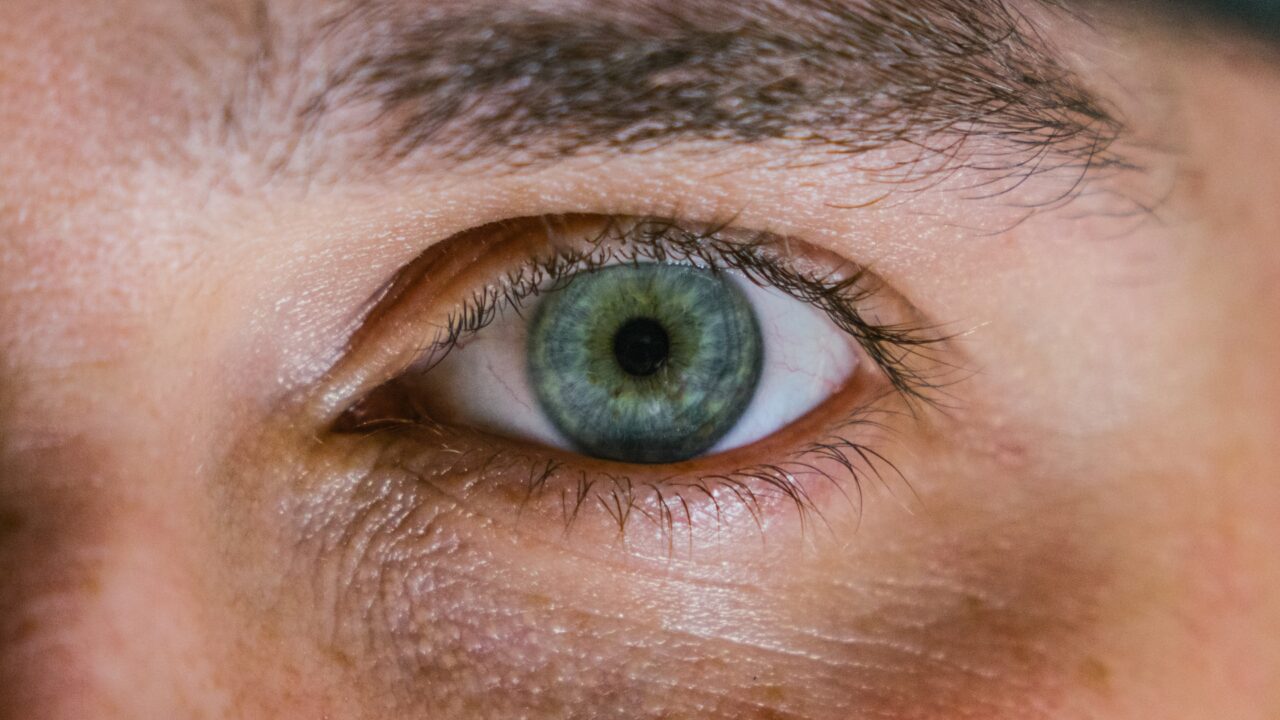Scleral lenses are bringing better vision to more people than ever before.
As a keratoconus treatment or a solution for ocular surface disorder and some refractive errors, scleral lenses are more and more popular with ophthalmologists.
Here is what you need to know about scleral lenses.
What are scleral lenses?
Scleral lenses are specialty contact lenses.
Most contact lenses are placed on the cornea. The cornea is the outer layer of the eye that covers the dark pupil and colored iris surrounding it. It’s not just a protective barrier. The cornea is a refractive surface, directing light into the inner eye. The cornea provides more than 60% of the normal eye’s focusing power.
Scleral lenses are different from regular lenses because they do not rest on or even touch the cornea. Instead, scleral lenses sit/rest on the sclera, the white part of the eye.
Because they need to arch over the cornea without touching it, scleral lenses are larger than regular contact lenses. They are not uncomfortable, however. The sclera is less sensitive than the cornea. It can carry the weight of the lenses, freeing the cornea from the burden or additional irritation.
This means that scleral lenses can offer some advantages over regular lenses.
What advantages do scleral lenses offer?
Normal vision is impaired when a person’s corneas are misshapen. Without the correctly shaped surface, the eye loses focusing power. There are lots of reasons why the cornea might be misshapen, including genetics, disease and injury.
Scleral lenses have the ability to correct the vision of those people with irregularly shaped corneas. The lenses bridge over the irregular surface to create a smooth, perfectly shaped dome that is better able to refract light. Focusing power is greatly improved.
Another crucial advantage of scleral lenses is that they are able to hold a large reservoir of fluid beneath their surface. There are several conditions, including dry eye disease, where this proves very useful as treatment. Many people find scleral lenses more comfortable than regular lenses.
What conditions can scleral lenses treat?
Worldwide research suggests that the majority of scleral lens prescriptions are made to address corneal irregularities. However, there are other conditions for which scleral lenses are proving to be an excellent treatment.
1. Corneal irregularities, including keratoconus
Keratoconus is a degenerative eye disorder that causes the cornea to thin and weaken over time. This means that it can become misshapen and bulge into a slightly more conical shape. This affects the cornea’s ability to work as a proper refractive surface.
Keratoconus tends to present in the teenage years and progress into adulthood. Risk factors include a family history of the condition and chronic eye inflammation from allergies.
Keratoconus is difficult to treat with standard lenses. The shape of the cornea means that standard lenses do not tend to sit well. They may shift with blinking or cause irritation.
Scleral lenses bridge the cornea to solve this problem. They are much more stable and comfortable for keratoconus patients. Scleral lenses are ideally suited to mild or moderate cases of the disorder.
2. Ocular surface disease (OSD)
Ocular surface disease is a term used to describe damage to the surface of the eye. OSD has many causes, including blepharitis and dry eye disease. OSD affects the normal functioning and structure of the cornea.
Around one in six scleral lens wearers use them to correct problems associated with OSD. Scleral lenses create a fluid reservoir behind the lens. This can bring relief from discomfort to the cornea caused by OSD.
Scleral lenses cannot cure OSD. However, they do provide more comfort and better suited vision correction than standard lenses for OSD patients.
3. Presbyopia and other causes of refractive errors
Refractive errors mean that your eyes do not correctly bend light, resulting in blurred vision. Examples of refractive errors are myopia (nearsightedness), hyperopia (farsightedness), astigmatism or presbyopia.
Presbyopia is a stiffening of the lens of the eye that enables nearsightedness. The condition is caused by natural aging and it usually begins to present in people during their 40s, and affects everyone..
Presbyopia cannot be prevented or cured. However, it is straightforward to treat the symptoms of the condition.
Some patients choose eyeglasses to correct blurred vision but others prefer contact lenses. Scleral lenses are increasingly used for treating blurred vision from presbyopia and other refractive errors. This is often because dry eyes can often co-present with these problems. Therefore, scleral lenses can help with both conditions simultaneously.
Patients with refractive errors who find regular contact lenses uncomfortable may find scleral lenses to be better suited to their condition.
Advances in scleral lens technology are creating opportunities to help treat more and more patients with an increasing range of eye conditions.
Will scleral lenses work for me?
It is always best to discuss your unique needs with a local eye specialist in Dubai like the Gulf Eye Doctors, or wherever you are located.
If you would like more information about scleral lenses or to discuss whether they suit your needs, we would be very happy to hear from you.




